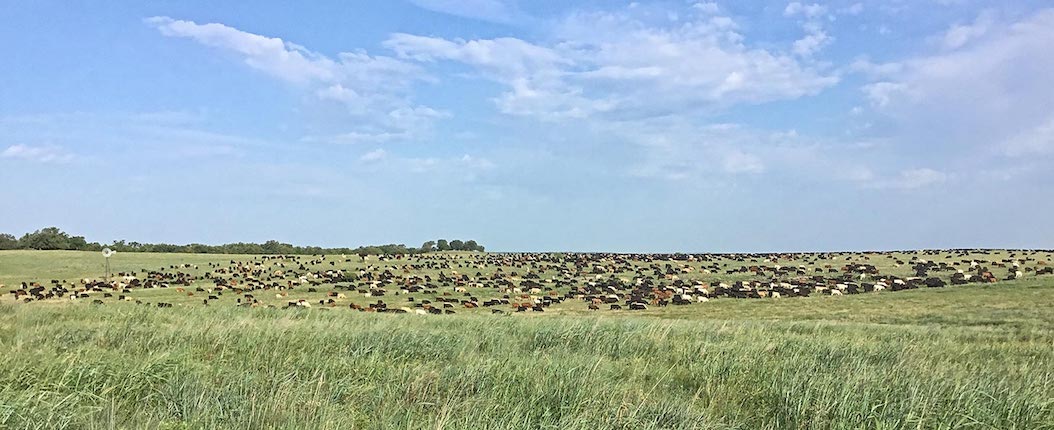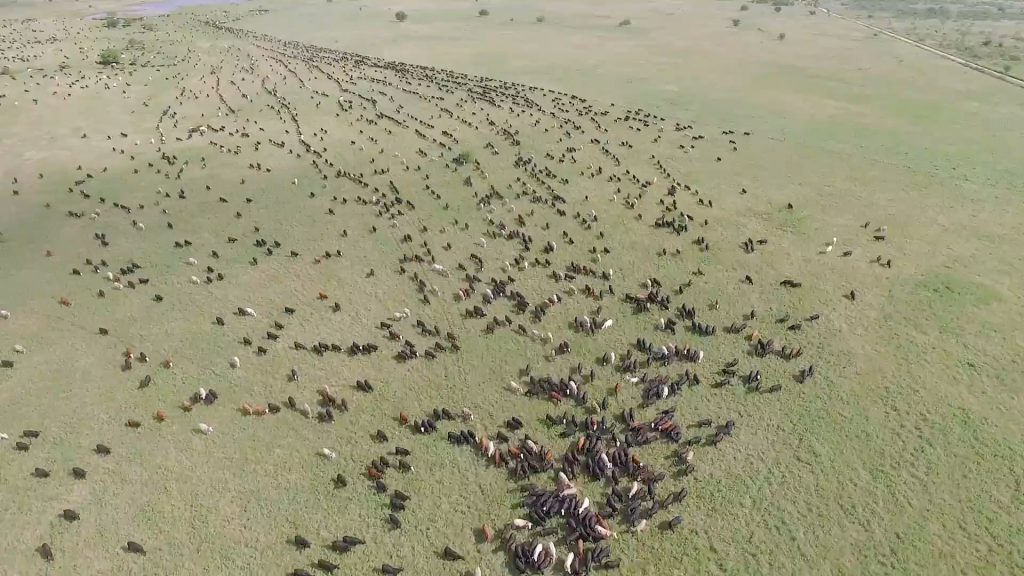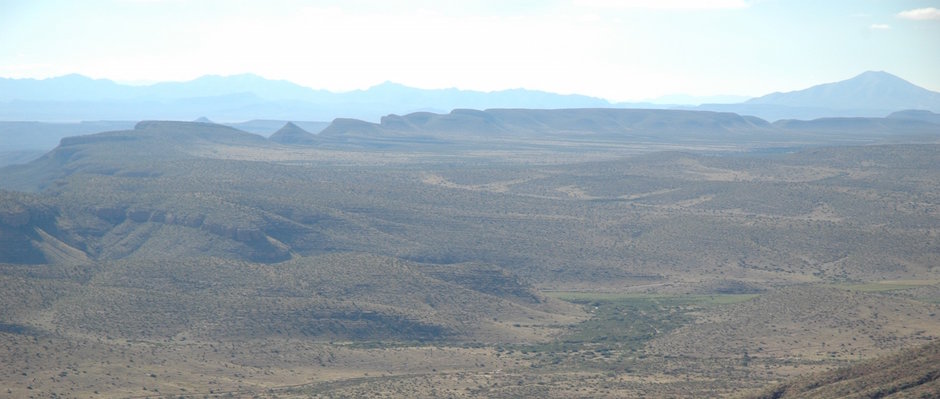Dr. David Briske et al. Synthesis Paper
This paper was published in 2008. Texas A&M range scientist David Briske and several academic colleagues concluded that planned grazing is ineffective and has been disproved as a grazing method, and that low-density set-stocking, which means keeping fewer cattle in one place all the time, is the best grazing method.
The paper reaches seven basic conclusions:
- In spite of overwhelming evidence to the contrary, rotational grazing continues to be promoted as the only viable grazing strategy.
- Continuation of costly experiments under conventional protocols will yield little additional information.
- Continuous grazing produced better plants in 87 percent of the studies, compared to rotational grazing.
- Animal performance was better under continuous grazing in 92 percent of the studies compared to rotational.
- Several effective strategies exist, but none have the unique properties that makes it more ecologically effective.
- Different outcomes are dependent on management.
- Advocacy for any form of rotational grazing is based on subjective perception and anecdotal interpretation.
I read the studies on which Briske relied. We corresponded about these. Of the studies he used to support his conclusions, not a single one tested planned grazing. They tested what are known as ‘short-duration grazing-rotational’ systems (SDG’s).
SDG rotational systems are not holistic planned grazing.
This error of mistaking SDG’s as planned grazing is common among conventional range scientists and their confusion unfortunately is imbedded in their literature and recommended practices, even though their conclusions have been disproven by later peer-reviewed research that did in fact test planned grazing. Flawed range science—often citing this paper—continues to be taught as fact in most of our wildlife and agriculture programs and relied on by agencies as their professionals determine how to manage land and advise others to manage land.
Meanwhile, worldwide acceptance of planned grazing is accelerating as ranchers’ on-the-ground results confirm its effectiveness. This illustrates the gulf between researcher theory and real world experience, and, why holistic ranchers must go outside the university-agency community to find methods to improve rangeland and wildlife that are based on sound science. Hundreds of posts on this blog cover the subject.

“Who are you going to believe, me or your own eyes?” ….Groucho Marx




Thanks Chris for once more exposing the opposition from Briske and those like (British columnist) George Monbiot and others who keep citing Briske.
What makes such opposition doubly tragic is that such people are not simply mistaken; they do not understand the paradigm paralysis they are caught up in. And they will never be held accountable for the millions of people suffering and dying, or the mass emigration changing the political face of Europe. Thomas Kuhn described some of this in his “Structure of Scientific Revolutions”.
I have been trying to help an academic in South Africa who posted a video of his work again condemning something he has neither understood nor studied. It is the first such open communication available to all on Utube. Here is the link should you wish to read our exchanges https://www.youtube.com/watch?v=xlqnG-Wjhls&feature=em-comments
I spoke with someone recently who has noted a change in tone around Holistic Planned Grazing. Richard Teague has been promoting it quite effectively in recent years. My very reliable and very engaged source tells me that he’s now seeing the anti-holistic planned grazing people shift from offense into a more defensive posture! We may be at the tipping point!!
Yes and it is really hard for the die-hards to dispute the results from the MIG projects. It is bottoms-up and as Savory keeps saying, as soon as the public allows it, institutional thinking will change.
One more comment:
I’ve had a discussion with a higher-up at NRCS and who expressed doubt about Holistic Management based on papers like Briske’s. When pressed further, he clarified that what we need is “Adaptive Management.” I pointed out that “Holistic Management” emphasizes monitoring and adjusting rotation frequency based upon on-going data collection. Therefore it is adaptive management! Fortunately, it was a real received response.
Thanks Ben,
I have had excellent support from individuals at NRCS. They are working with Savory Center, HMI and Quivira. They are stuck with their organization’s thinking: If any agency comes around institutionally, it will be NRCS. Keep your fingers crossed.
Ben, thanks for pursuing the issue with NRCS folks. If I might help, adaptive management is the oldest form of management known to humanity. Academics recently gave it a new name “adaptive management” – it is simply the universal reductionist management in which we adjust and adapt as we experience unexpected results. This is one of the reasons why when developing the Holistic Management Framework we made it proactive management. That is why with any new actions affecting our environment we automatically assume we are wrong and the monitor at whatever point we will get the earliest warning. All this is explained in the textbook Holistic Management: A Commonsense Revolution to Restore Our Environment. Another minor point, you state “I pointed out that “Holistic Management” emphasizes monitoring and adjusting rotation frequency based upon on-going data collection.” This is not quite right, first we never ever rotate and thus do not adjust rotation frequently so you might watch that one. I have again tried to make all this as clear as I can in the recent 3rd edition and in all the training materials from Savory Institute they too are doing so. A major part of the difficulty with the Holistic Planned Grazing process is that people pick it up from others in the usual way that new knowledge spreads in society. But that is like we used to say in the army – “send reinforcements we are going to advance”, once it had passed through two people became ” send refreshments we are going to a dance”. Thus it gets confusing. Within six months of my beginning to train thousands of ranchers and NRCS, BLM, BIA, USFS, faculty for land grant colleges etc in the U.S. there were about 15 new “grazing systems” that emerged but all lost the plot. Much the same happened with Andre Voisin’s rational grazing. So it is wise to always go back if you can to the original work – either my book, or even Voisin’s (that is why my wife and I had his book republished in the US). Hope that helps and again thanks for your concern and commitment.
Allan, Thank you for your clarifications. I truly appreciate the difference that you illustrate and will do my best to reflect this in future discussions. I will also look for further clarifications in the institutes training materials so as to promote Holistic Management more effectively.
Thank you for formally pointing this out. It’s extremely frustrating to see the results on the ground go unrecognized by mainstream rangeland science.
What I usually tell folks is that holistic management is inherently unfalsifiable because it is flexible and adaptive, and by this very nature will be not register in academic journals (unless it’s falsely invoked, as you’ve said).
Hopefully the anecdotes and case studies will rise to a fever pitch that cannot be ignored in due time. In the meantime, it’s our job as practitioners to invite observation in lieu of erroneous research trials too rigid and short-lived to be of any use. Restoration is a long game.
Stephen Q. Schafer e-mailed me these questions:
Hello, Christopher Gill,
We were introduced by email and I’ve enjoyed reading your weekly bulletin since. Now I’m asking for your opinion about Savory methods. I recently stumbled on a critique that is some ways seems more telling than many of those prompted by AS’s early TED talk.
https://www.ars.usda.gov/ARSUserFiles/4472/RANGELANDS-D-13-00044.pdf
From your experience at Circle Ranch, do you think Briske et al are correct? The article is old, but I had not seen it before when scanning the many critiques of Savory.
(1) It contradicts claims that all excess CO2 in atmosphere could be put back into soils. A follower of Savory myself, I’ve never been able to subscribe to that.
(2) It – accuses is the right word – Savory of misusing photographs, which if true is a bad mark.
(3) It says that a crust on arid soils that would be broken by livestock may be protective against erosion, that this crust should be protected. not walked on.
My wife and I were recently at Canyonlands where our well-informed guide told us that large areas of the high desert (5000 ft) soil are armored with a thin plating of lichen or some such that is so brittle if stepped on that visitors are asked not to go off the trail . Ditto at Arches. The crust apparently protects against wind erosion.
Can you attribute some of the improvements you have seen at Circle Ranch to holistic grazing with cattle and other hoofed grazers trampling the ground for a limited time?
I read Briske et al. to be saying that desertification cannot be reversed or slowed by Savory methods but you must think otherwise.
Thanks for any insight you can give,
Best,
To which I replied:
Hello Stephen,
Allan promotes a holistic decision-making process, not a grazing system per se. It incorporates this physiological insight: plants need animal impact to be healthy. Length of the grazing (time), its intensity (animal numbers) and recovery period (rest between grazings) must be right or plants are harmed.
David Briske’s basic conclusion is that animal impact is not necessary for plant health, but, if you must have cattle, then a few animals, kept permanently in one pasture (low density set-stocking) is the best way to graze. In this conclusion, David is wrong, based on our 20-years of experience at Circle Ranch.
David did no original research. He compiled and summarized the conclusions of others. Read this paper in which I personally read and evaluated the same studies on which David relied. NOT ONE TESTED PLANNED GRAZING. I wrote David more than once asking him to name just one paper which he believed had studied and disproved planned grazing – he never has identified that paper.
https://pitchstonewaters.com/briske-et-al-synthesis-paper/
https://pitchstonewaters.com/chris-gill-to-dr-david-briske/
Meanwhile Richard Teague, another Texas A&M professor did another peer-reviewed paper which disproved David’s conclusions:
https://pitchstonewaters.com/richard-teague-et-al-on-benefits-of-planned-grazing/
Here is a summary of the back and forth:
https://pitchstonewaters.com/regarding-holechek-and-briske-and-rebuttals-by-teague-gill-savory/
Since those exchanges, widespread adoption of Management Intensive Grazing (MIG) methods wherein huge numbers of livestock are moved hourly, followed by long recovery periods have been so successful that there is not much left to debate as to whether overgrazing is caused by too many animals (Briske), or the length of grazing and recovery periods (Savory). Quoting Groucho: “Who are you going to believe, me or your own eyes?” It is pretty amusing to see the traditional low-density, set-stocking advocates try to retrofit decades of bad range advice with the undeniable success of MIGs – while avoiding any use of the ‘S’ or ‘H’ words.
But holistic regenerative management pursuant to formalized planning that places social and environmental outcomes on a par with profits is far from accepted by the traditionalists who believe in the industrial methods of agriculture and the fake science of Invasive Species “Biology”.
1 & 2: Allan can defend his photos, and other calculations. Allan is a simplifier. I would say of him what I say about Trump: Always take him seriously but don’t necessarily take him literally.
3: The nicest thing I can say about the idea that soil covered with impervious crust shedding all water is better than soil open to rain in order to grow plants is that it is really dumb.
Regards and I hope this helps,
Thanks once more Chris for helping bring sanity and integrity into the endless academic attacks on what they think is my work, but never is. Illogically when my work was plagiarised in Texas and published as the work of TX universities it was scientifically sound. But when the original author arrived in the US the original work was not. I still have a copy of their publication in 1978 of their version of my work – that they now keep attacking.
I am not sure what photos I am alleged to have used wrongly or doctored. Someone needs to tell me what that is about. The most telling pictures of theirs I have used were the ones in my TED Talk of a research plot desertifying. Those I took with their permission (otherwise could not use on TED) they published those in their white paper on climate change, including what I quoted them saying the desertification was due to “unknown causes” – they just cannot understand that resting land is a major action leading to desertification (paradigm paralysis the kind explanation.)
Not sure if you ever read Carl Hart’s book High Price – a black tenured professor at Columbia who describes academic behaviour as being worse and less ethical and honest than that of the drug gang Miami hood in which he grew up as a gang member. I thought it was only me but see this is a more widespread problem.
Eventually if we are to survive with hope for future generations people will have to understand the holistic framework is far more than the addition of the tool of livestock – as I have tried to convey in these blogs you may not have seen https://www.savory.global/uncensored/fate-city-based-civilization-hands-farmers/
Wallace-Wells followup http://www.savory.global/uncensored/hope-future-first-real-hope-centuries/
Thank you Allan; let me say how much I admire the stubborn courage with which you have persevered – and in the process changed range thinking and practices so much.
My shorthand for holistic planning is that it is strategic planning process that places social and environmental outcomes on equal footing with profits. The thinking goes far beyond ranching and is a solid framework for everything we do. The livestock insights are as revolutionary in wildlife management as ranching. The importance of this thinking to environmentalism cannot be overstated: In my opinion this will be your lasting contribution.
Sincerely,
Chris
Chris I am not sure if you ever read my first series of blogs? Here are three shortish blogs covering the most important issue if humankind is to prevail for much longer http://www.savory.global/uncensored/why-managing-complexity-is-the-primary-issue-for-survival-of-civilization/
http://www.savory.global/uncensored/why-humanity-cannot-manage-complexity-successfully/
5th blog Managing Complexity http://www.savory.global/uncensored/managing-complexity/ I don’t understand why I had almost zero response from anyone – is this too complicated for people? Do they not know how to respond? Do they feel hesitant to respond for some other reason? Or do people just think I am nuts?
Dear Allan,
These are outstanding pieces. I think it is hard to get the rangeland ideas across and harder still the planning process in more abstract contexts. You have accomplished so much to move people toward these concepts.
With best wishes,